by Mike Anderson
themikeanderson
6th July 2015While the majority of you will almost certainly know how to inflate the tyres on your bike, it’s another of those simple tasks, like changing an inner tube or using clipless pedals, that can seem pretty confusing to a beginner.
There are plenty of different types of pumps, inflators, valves, tubes and tyres – and all that can be a real nightmare if you’re coming to it for the first time.
If you ride a road bike, the Presta valve (above) is pretty much the only type of valve you’ll need to worry about dealing withSo here’s a handy guide to all things tyre inflation that’ll help to clear up any ambiguity surrounding the subject and have you fully inflated and ready to ride in no time…
The best place to start is what type of valves your inner tube (or tyres, if you’re running tubulars) have. There are two basic types of valves that you’ll find on bikes: Presta and Schrader. For the most part, inner tubes and tubulars on road bikes will use Presta valves, and mountain bikes will use Schrader valves.
The visual differences between the two are obvious, with the Presta (pictured above) being slimmer, lighter and having a lock nut to close that you can see on the top. Schrader valves are wider, more robust and have a spring mechanism on the inside to keep the valve closed, rather than a screwable top section.
Because the widths (or diameters if you prefer, seeing as they’re both cylindrical) are different, they’re not easily interchangeable in wheels that are designed to accept one type.
Schrader valves are too thick to fit through the tube hole in a road rim, and Presta valves will need adapters or shims (or an awful lot of electrical tape) to fit on an MTB rim. Plus, in really narrow road tyres, there might not even be space for the large Schrader valve to fit between the beads.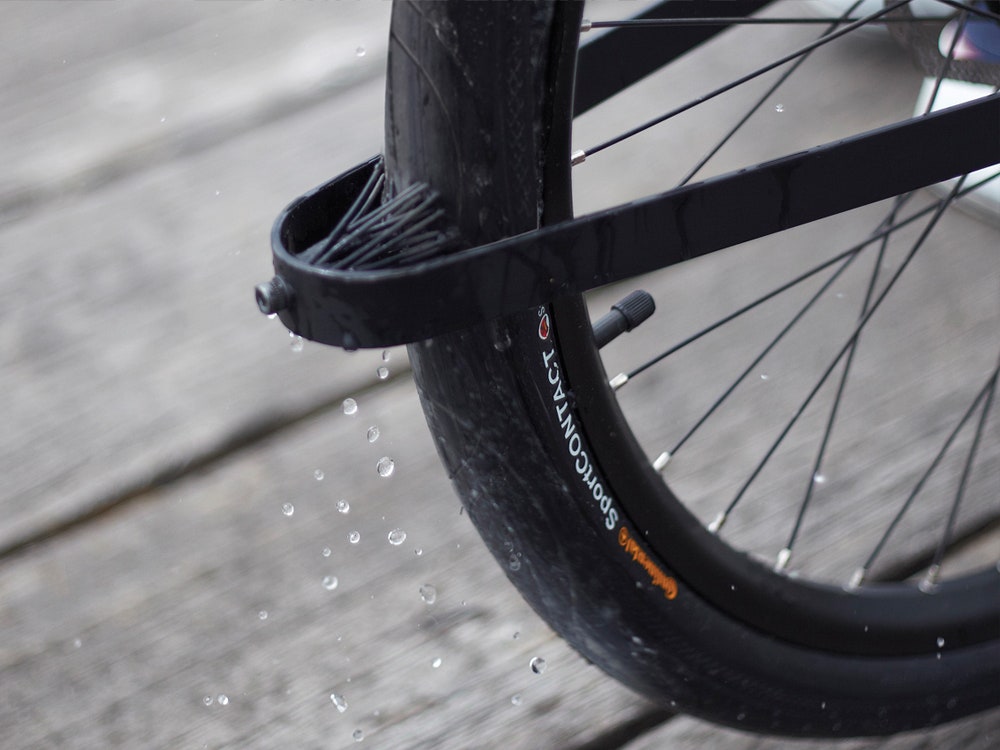
As they have no spring in the valve, Presta valves are easier to pump up than Schrader, especially so with small capacity hand pumps, and it also means small pumps don’t need an in-built device to depress the spring in a Schrader valve.
One of the smart parts of Presta valve design is that even when the top section is open, it won’t leak air unless it’s pressed down. That means even if you forget to rescrew after you’ve pumped the tyre up, you shouldn’t find yourself with a flat again 500 metres down the road.
Because the two valve types are different, they require two different types of head on a pump – or, as is often the case, an interchangeable head.
In other words, you can’t use a Schrader-headed pump to inflate a Presta valve tube without an adapter, and the opposite operation won’t work at all.
Fortunately, most modern floor pumps have a very simple answer for this: a pump head with dual attachments. And that’s even better if you ride both road and mountain bikes, because it means you only need the one pump for both jobs.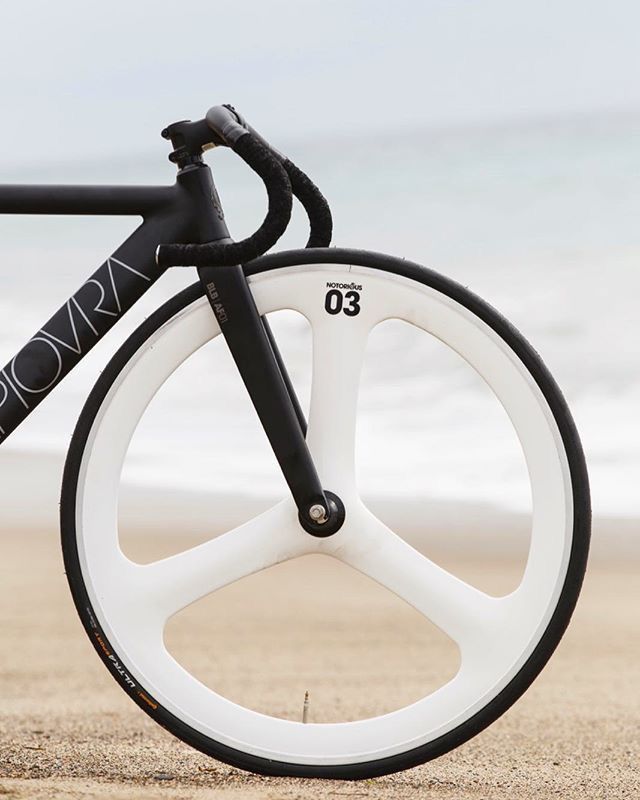
Some are very obvious (like the PRO pump on the right of the picture) as there are literally two different attachments on the end of the hose but others (like the Birzman pump pictured left) require you to unscrew the end to reveal the Schrader adapter, or in some cases even flip the valve end over.
It’s still a simple operation but one that can seem completely confusing if you’re just standing there with the valve hose in your hands trying to figure it out.
When it comes to actually pumping up your tyres, there are a few different types of pump/ways to do it. The first and most common of these is the track pump. Track pumps are one of those essentials that every cyclist should own.
They’re usually around two feet high, have a fairly large capacity and are capable of inflating tyres to high pressures – usually much higher than required. For example, my track pump can inflate to 160psi which is far higher than I’d ever want my tyres.
For example, my track pump can inflate to 160psi which is far higher than I’d ever want my tyres.
Track pumps are quite large and generally kept in the garage (or wherever you keep your bike in the house) to pump up tyres before you ride.
The main bonus is that because of their high capacity, they make inflating tyres to high pressure comparatively easy – you can inflate a tyre all the way up to 100psi in 10-15 strokes easily (depending on pump capacity).
Track pumps are quite large, comparatively, but they’re the best and easiest option to pump your tyres up before a rideThen there’s the mini pump. Mini pumps are ideal to stick in your jersey pocket in case of a mid-ride puncture. Most are capable of inflating tyres to a reasonably high pressure (though not as high as a track pump), but it’s a longer and occasionally more frustrating experience.
However, no matter how frustrating it’s vastly preferable to being stuck 40 miles from home with a flat and no way of pumping it up.
Mini pumps come in various varieties – some more ‘mini’ than others – and most will have a tube that extends and packs back into the end of the pump in order to add a bit of flexibility without which it would be very easy to snap off the end of a Presta valve. You may laugh, but it can happen.
Mini pumps are ideal for mid-ride puctures. Most have a rubber tube that you can pull out of the pump to add some flexibility and make it easier to inflate tyres on the goThe third common option isn’t strictly a pump, it’s a mini inflator. These use a small valve ending and inflate using disposable CO2 canisters.
The bonus of these is that they inflate incredibly quickly and, depending on the capacity of the canister, can pump a tyre all the way up to around 200psi – not that you’d need to go that high.
The down side is that each canister is single use only, so it’s only as good for as many as you’re prepared to take with you. The SKS Airboy CO2 combines a mini pump and CO2 inflator in one handy unit, which solves that problem.
There is one final option, and that’s an air compressor. However, they’re pretty expensive and almost exclusively used by pro team mechanics.
They do make the process an awful lot simpler, and they can also make it easier to hit a desired psi if you have a strong preference. It also saves the pro mechanics from having to pump up 18 individual tyres on the bikes and all the spares every morning at a big race like the Tour de France.
The first step is unscrewing the Presta valve head. It unscrews anti-clockwise and you’ll be able to see it moving upwards along the small central spindle. Make sure it’s open all the way.
Next, attach the pump end to the valve head.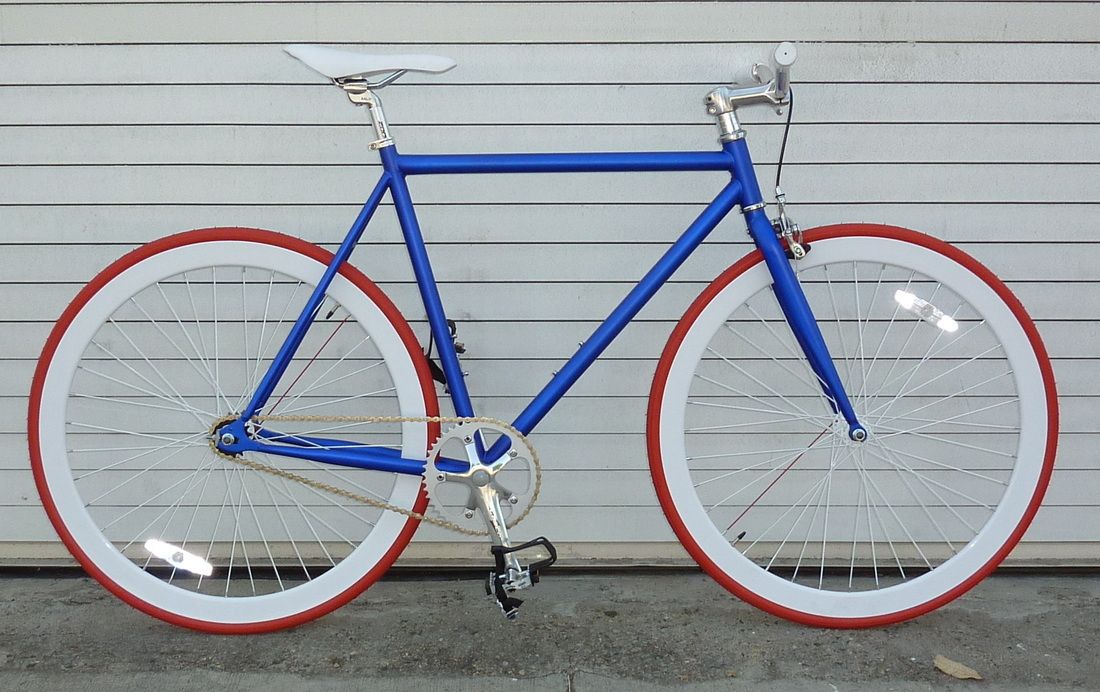 As I mentioned earlier, make sure you’re using the Presta attachment on the pump, not the Schrader as otherwise you’ll get precisely nowhere.
As I mentioned earlier, make sure you’re using the Presta attachment on the pump, not the Schrader as otherwise you’ll get precisely nowhere.
Also, you need to ensure the pump head is securely fastened onto the valve otherwise the air won’t go into the tube properly. It needs to be a sealed system to be most effective. How you create that seal depends on the pump. A lot will have a lever you flick up to secure the pump head, some will have a chuck to screw on.
Keep an eye on your track pump’s pressure gauge while you inflate your tyres. If you go over the recommended maximum pressure the results can be drastic, explosive and expensiveAfter that simply pump up the tyre, keeping an eye on the pump’s pressure gauge, and make sure you don’t over-inflate the tyre (most tyres will have written on the side the suggested pressure range).
While you might fancy going a little under the bottom number to cushion the ride or add a little more grip, going over the top one could cause the tyre to explode off the rim, potentially writing off the tyre, tube and rim.
Generally you can find a happy medium between the two through experimentation, and depending on your weight, where you ride, and how much cushioning you want the tyre to provide.
And that’s that. Now you’re ready to roll. Simple, right?
Please enter your email so we can keep you updated with news, features and the latest offers. If you are not interested you can unsubscribe at any time. We will never sell your data and you'll only get messages from us and our partners whose products and services we think you'll enjoy.
Read our full Privacy Policy as well as Terms & Conditions.
Cookies help us deliver our services. By using this website, you agree to our use of cookies. Learn More
Accept
production
There are few things more frustrating than a tire that won’t inflate.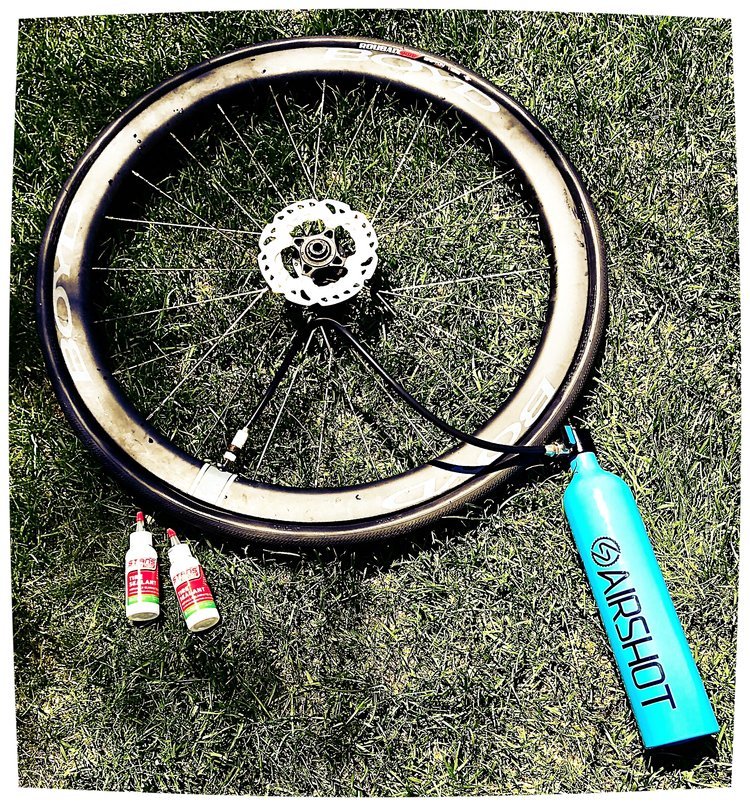 Oftentimes, new riders will see there’s no damage but the tire continually leaks air instead. While it’s a common problem, it’s also easy to fix.
Oftentimes, new riders will see there’s no damage but the tire continually leaks air instead. While it’s a common problem, it’s also easy to fix.
So, why won’t your bike tires inflate?
The most common reason for a bicycle tires to not inflate when pumped, is an improper connection between the pump and the tire valve. Make sure you are using the correct type of pump (i.e. Presta or Schrader), and ensure a straight and firm connection. If this doesn’t work, then you should inspect the tire valve.
With that said, let’s dive right in. We’ll cover:
Table of Contents
You’ll need to know what’s going on before you can fix the problem. The following are five common reasons that a bike tire won’t inflate.
If you’re new to using a bike pump (or just haven’t used one in a while), then you may have it in the wrong position.
Bike pumps and valves can be a little bit finnicky, and you’ll need to make sure you have a clean connection in order for the airflow to work like it’s supposed to.
When the pump isn’t in line properly, it just results in backpressure in the pump and the release of air around the stem. You’ll notice that it’s very hard to pump and the tire probably won’t be receiving any airflow.
Solution: If this seems to be your problem, jump to this section below for more information about connecting your pump properly.
If you have a Presta valve, then you’ll need to make sure it’s open before you can fill the tire. Opening a Presta valve is very simple, but if you’re new to them, it’s an easy step to forget. I use Presta valves, here’s what they look like (in the open position) on my bike:
Solution: You can tell if you have a Presta valve by looking at the air inlet for the tire. Presta valves will have a metallic stem with another round screw in the top, twist it left to open the valve. Once closed the tire won’t accept air.
Schrader valves release air when the central pin is pushed down against the spring. Sometimes the spring can get pinned, causing the tire to continuously release air.
Sometimes the spring can get pinned, causing the tire to continuously release air.
Remove the cap and check the valve. I’ve seen things as simple as a small piece of debris clamp a valve down and cause it to release air.
Solution: Just clear any obstructions and make sure the central part of the valve returns to the top of the motion. This is the reason you should make sure you have caps on your valves when you’re not inflating them.
Valves sometimes break over time. It’s rare on a bicycle to see a tube last that long, but you never know what might happen. There are a few critical components that can cause failure.
Solution: For a bicycle, the best answer is usually just to replace the inner tube.
Alternatively, if you have an extra valve around, you can replace the core. You’ll just need a valve tool. Oftentimes they’re even built into the caps, look for a slotted top instead of the normal round cap. You can just screw in the functioning valve with the same tool once you’ve removed the broken one.
You can just screw in the functioning valve with the same tool once you’ve removed the broken one.
Inner tubes can be fragile, and any serious damage to one will result in a tire that doesn’t inflate. Small tears can lead to slow leaks as well, keeping your tire from staying inflated no matter how much you try to up the pressure.
If all else fails, check the tube for holes. The easiest way is just to inflate it outside of the tire and listen. Even a pinhole leak will often hiss. If you don’t find anything, another helpful trick, is to put it in water (e.g. a sink or bucket) and look for bubbles.
A leak that prevents the tire form inflating at all is rare, but it will be immediately noticeable.
Solution: for small tears, simply use a patch kit to repair the tube. For bigger tears (too big for a patch) you’ll need to replace the inner tube.
The most common reason for a bike tire not to inflate, is a bad connection between the pump and the tire valve.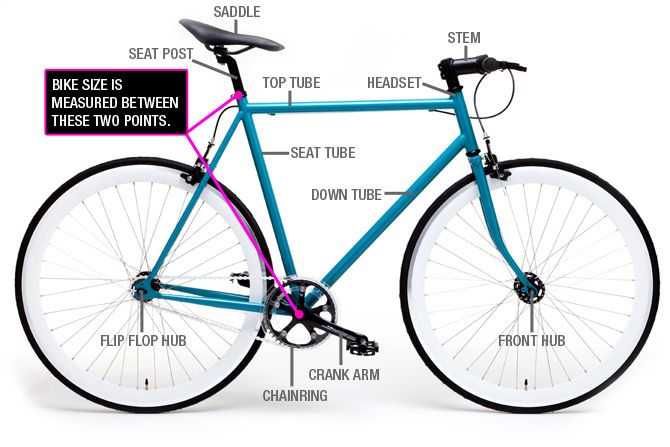
So, let’s quickly cover how you can fix this problem (and avoid it in the future). If you already know you have a different problem, then you can skip down to the next section.
Your pump should indicate whether or not it’s open. You need to have it firmly on the tire and then force the lever into position.
You’ll also need to make sure you’re using the correct pump for your bike (i.e. a Presta pump for a Presta valve or a Schrader pump for a Schrader valve).
Most good bike pumps have an adapter for both Schrader and Presta valves, but some will only allow you to fill one type of tire. If you have a pump with two openings, then the bigger hole is for Schrader tires and the smaller one is for Presta tires.
Press the pump down firmly over the stem with the correct hole. The lever then has to be flipped to allow air to pass into the tire. Most will flip upwards to lock the valve open and allow air to pass.
You’ll also need to make sure the pump is working. Just pump it while holding a finger over the air outlet, if you feel it building pressure then the problem is elsewhere.
Just pump it while holding a finger over the air outlet, if you feel it building pressure then the problem is elsewhere.
If at first you don’t get a good connection, reposition the pump and try again. If, after a couple of tries, it’s still not working, then you probably have a broken pump or a broken tire valve.
Try to test this theory by borrowing a different pump (to see if your pump is the problem) or pumping a different tire (to see if your tire valve is the problem). Then, replace the faulty equipment.
A brief refresher on how to inflate both types of tire will likely be helpful in resolving your issue.
Inflating your tires can be a little more complicated than just pressing on the pump. It’s a simple process but some things are easy to overlook. Let’s get into it:
Schrader valves are very simple to fill, and they’re exceptionally common. They’re the same valve used in car tires for instance.
Just do the following:
Presta valves are often found on high-end tires and they’re a little bit more complex to fill.
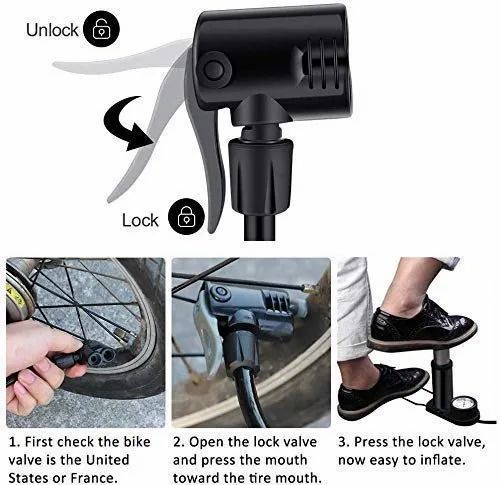
When a tubeless tire doesn’t fill, the problem is basically always an air leak. Finding it is simple, as long as you go about searching in a systematic way.
Tubeless tires cause a different variety of problems than the standard fare. They seal into the rim after inflation using a compatible rim. They’re mostly used by MTB riders who want to lower tire pressure for better traction while avoiding the potential of a pinch flat.
The most common cause for tubeless setups not filling is that the tire isn’t fitted properly. If the bead isn’t set against the rim correctly, there’s no seal. Remember that tubeless tires require the whole system to be air-tight, so there are different places to check than when you use a standard bicycle tire with an inner tube.
If the bead isn’t set against the rim correctly, there’s no seal. Remember that tubeless tires require the whole system to be air-tight, so there are different places to check than when you use a standard bicycle tire with an inner tube.
If all else fails, spray the tire down with soapy water and then try filling it. The bubbles formed will be a dead giveaway to the source of your problem.
The bubbles formed will be a dead giveaway to the source of your problem.
Contents
Flat tires do not bode well for the cyclist. The situation must be resolved immediately, otherwise you will have to become a pedestrian for a while. What should be done? That's right, pump up the camera and calmly continue moving. Consider how to pump up a bicycle wheel with a pump, what subtleties are available when using an autocompressor, and whether it is possible to do without a pump. nine0003
Tire pressure is the main parameter that is responsible for the speed of movement, grip and safety of the cyclist. The average minimum indicator for bicycles is 2 atmospheres. For driving on asphalt, the recommended value is within 3.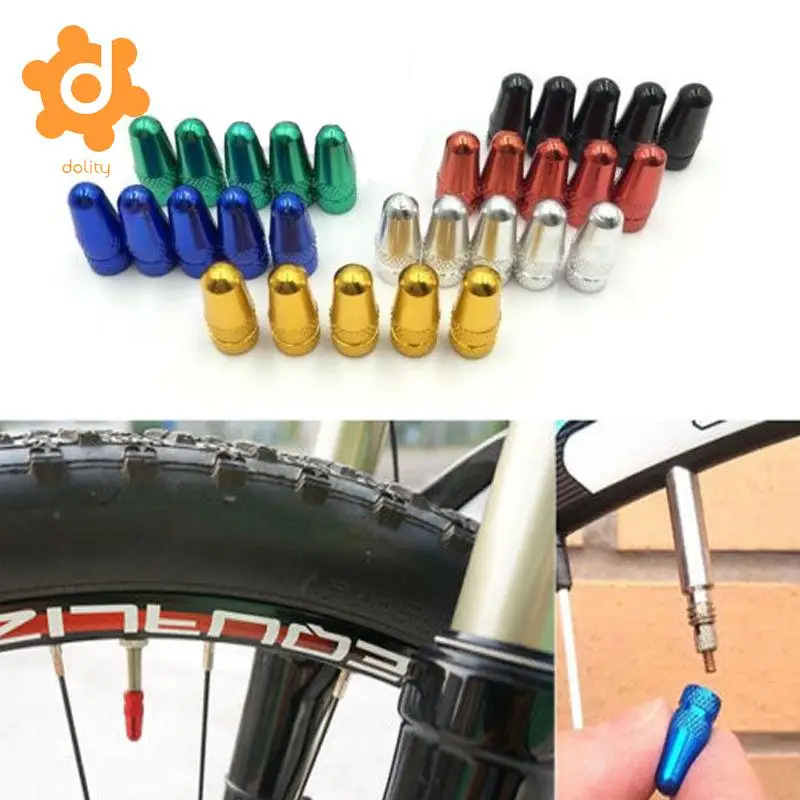 5 atm., For primers - 2.6 - 2.8 atm.
5 atm., For primers - 2.6 - 2.8 atm.
It is easy and simple to determine the pressure inside the bicycle tube using a pressure gauge - separate or built into the pump:
Another method: feel around the entire circumference of the tire with your fingers. If the rubber does not flex, then you can ride. It should be noted that this method will only give accurate results for thin slicks on road bikes and tires on city bikes.
Consequences of underinflated tyres:
On the contrary, an excess of air in the chambers threatens the following:
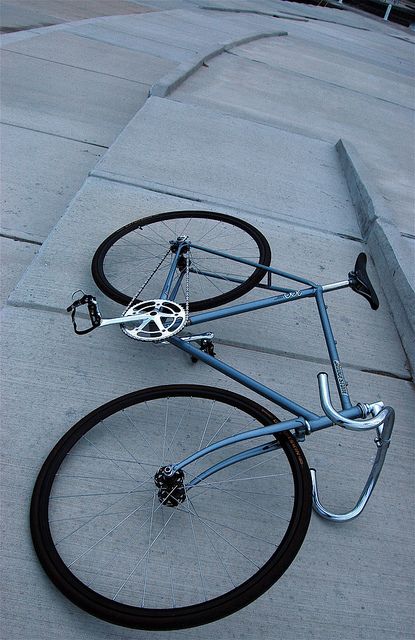
Maintaining the recommended pressure will eliminate all these shortcomings and allow you to get the most out of your trips. Below is a table of values depending on the weight of the cyclist:
| The mass of the cyclist, kg | atmospheres/PSI* |
| 50 | - 2.59/35 - 38 |
| 3.1/45.5 | |
| 90 | 3.6/53 |
| 105 | 3.9/57.5 |
| 4.1/60 | |
| 118 | 3.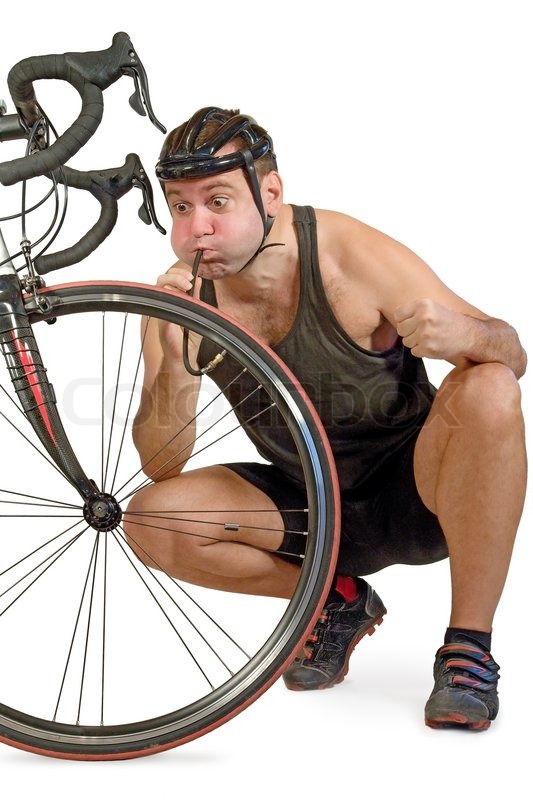 2 - 3.4/47 - 50 2 - 3.4/47 - 50 |
*1 atm = 14.696 Psi
In general, a bicycle pump is a necessary thing for every cyclist. With the help of this simple device, it will be possible to inflate the wheels on your own, and not roll your bike to a service or gas station.
Hand pumps are divided into two types: simple and with a recording device (pressure gauge). It is recommended to purchase the second option, however, if a separate pressure gauge was lying around in the cabinet, you can buy a cheaper pump. nine0003
Universal hand pump with dial gauge
For ease of pumping with a conventional hand pump, you can immediately count the number of air inlets until the optimum pressure is reached and then pump exactly like this, even without additional use of a pressure gauge.
How to inflate the chambers correctly:
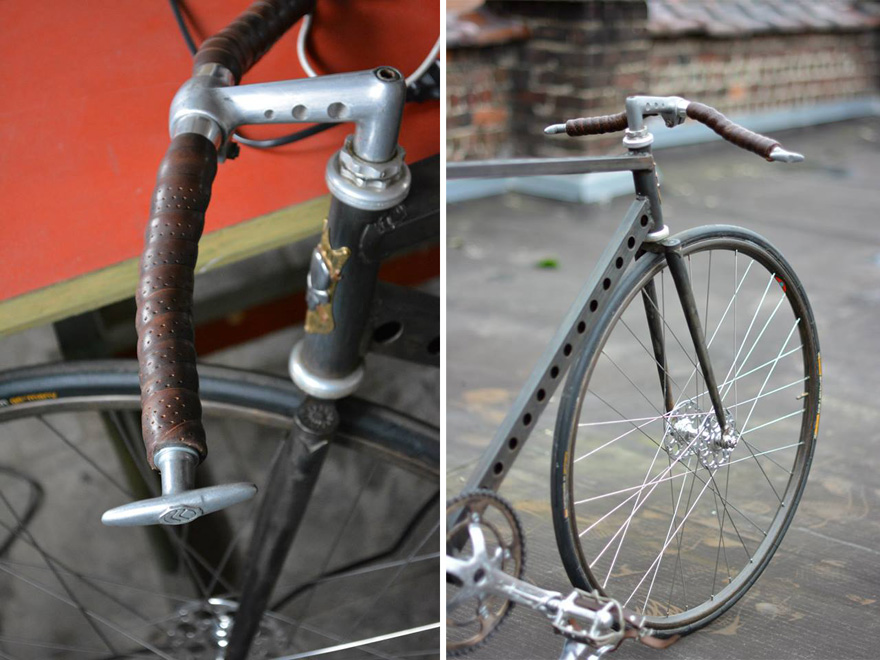 You can also inflate on an upside down bike or the wheel separately if the bike is being dismantled. nine0006
You can also inflate on an upside down bike or the wheel separately if the bike is being dismantled. nine0006 Pressure tracking:
By the way, the latter will not be superfluous to do with a pressure gauge, since the pressure inside the pump can increase during pumping, but air does not enter the chamber (the valve is not completely closed) or exit through a hole in it.
Common bicycle nipples are automotive and Dunlop. For thin wheels, a Presta nipple with a valve is used. It requires cleanliness and accuracy in handling.
Presta tubes fitted to road bikes and select hybrids
A special small volume pump is matched to it. A regular bike pump may not fit or you may need to use an adapter.
A regular bike pump may not fit or you may need to use an adapter.
Most bicycles have a "Schrader" or car valve. The standard option allows you to inflate tires at gas stations and public bike pumps (of which there are only a few in our cities so far) directly.
How to inflate simple wheels with a car pump:
How to inflate your Presta with a compressor at a gas station:
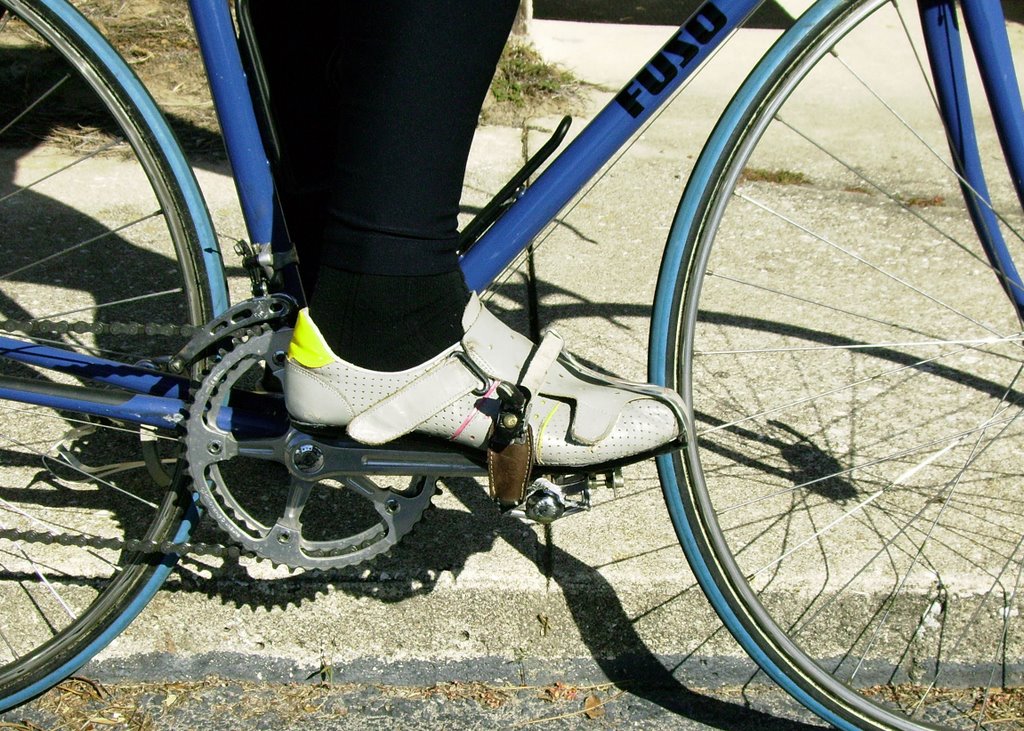
In this case, it is very important to know exactly how many atmospheres it is necessary to let air into the chambers. With increasing pressure, it can quickly burst.
The last option left is Dunlop. It is identical in size to an automobile nipple, but in terms of design features it is similar to the French one (aka Presta). When inflating a wheel, you should follow the rules for a sports analogue. nine0003
Is it possible to inflate bicycle inner tubes without a pump? It is unlikely to reach the recommended pressure, since a regular supply of pressurized air is required, but you can reach the minimum values. Let's consider several methods of pumping chambers, which can be resorted to without using a pump:
Vacuum cleaner. Many models are equipped with a blower mode, when switched to which air is blown out. A thin hose can be used to connect the wheel nipple. The result directly depends on the tightness of the connection between the hose and the nipple. Here you can use rubber pads, clamps and even rags. nine0003
A thin hose can be used to connect the wheel nipple. The result directly depends on the tightness of the connection between the hose and the nipple. Here you can use rubber pads, clamps and even rags. nine0003
Bottle pump. You will need two plastic bottles. One of them will serve as a cylinder, the other as a rod. Cut off the bottom of the first bottle and connect its neck through a thin hose to the chamber outlet. Next, insert the second bottle into it and with translational movements pump air through the cylinder into the hose. For tightness, grease the connection of the neck and the hose with sealant or lay a rubber pad. High pressure cannot be created, but it is possible to ride the N-th distance on a bicycle. nine0003
Bottle pump schematic: 1 - "rod", 2 - cylinder, 3 - cylinder neck, 4 - hose
The third way is to remove the nipple and inflate like a balloon. The method is fraught with difficulties in its removal and installation in its rightful place.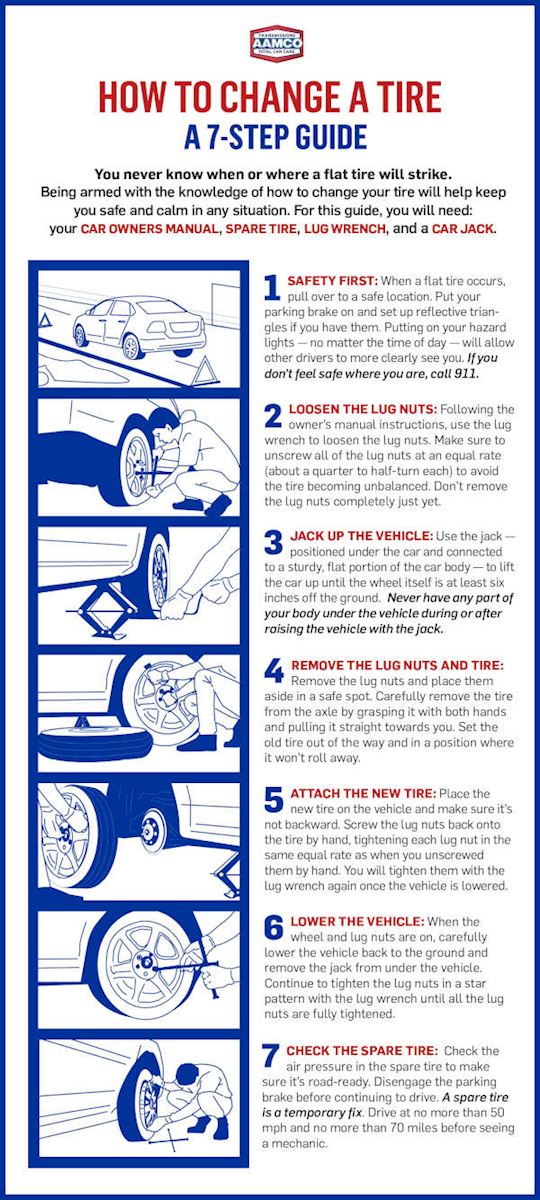 It will be especially difficult to install back, since during this time all the air can be released.
It will be especially difficult to install back, since during this time all the air can be released.
An alternative tire inflation option is to inflate with a bicycle air fork pump. You will have to work hard, as this pump is designed for small volumes. nine0003
Despite the fact that a resourceful person will find a way out of any situation, it is recommended to have a special pump for tire inflation. Moderately inflated bicycle chambers are the key to comfortable trips without unpleasant surprises in the form of a burst chamber or damage to the wheels.
Don't let a flat tire put you off your path. Learn how to repair a tire in the field. nine0003
By Joey Nickisher, OFFGRIDWEB.COM
Translation and adaptation by Artyom Kostin, LASTDAY.CLUB
A few years ago, my colleagues and I were conducting a search and rescue operation. We successfully found the "lost", but halfway out of the forest, we suddenly realized that the wheel of our SUV was punctured. Another transport for the evacuation of the victim was not suitable, and he needed medical assistance urgently. So I had to repair the tire in the field. Happened. The victim was taken to the hospital, and we were enriched by the experience of field repairs. But what would we do if we didn't have the right skills and tools? Do you have them? nine0003
We successfully found the "lost", but halfway out of the forest, we suddenly realized that the wheel of our SUV was punctured. Another transport for the evacuation of the victim was not suitable, and he needed medical assistance urgently. So I had to repair the tire in the field. Happened. The victim was taken to the hospital, and we were enriched by the experience of field repairs. But what would we do if we didn't have the right skills and tools? Do you have them? nine0003
Therefore, to begin with, let's talk about the simplest and most banal option for “repairing a tire” ...
Yes, some motorists are very lucky and they never had the need to change a flat tire on their own. Others were less fortunate, and they know perfectly well what kind of hemorrhoids it is to change a wheel right in the middle of the road. Worse, perhaps, only to do it in the middle of a dense forest. So, it is worth figuring out by experience how to do it yourself. No kidding, because at least in theory anyone can do it - “ It's business - to jack up, unscrew the nuts / bolts with a balloon, raise the car, remove the wheel, put the dock, tighten, lower, tighten .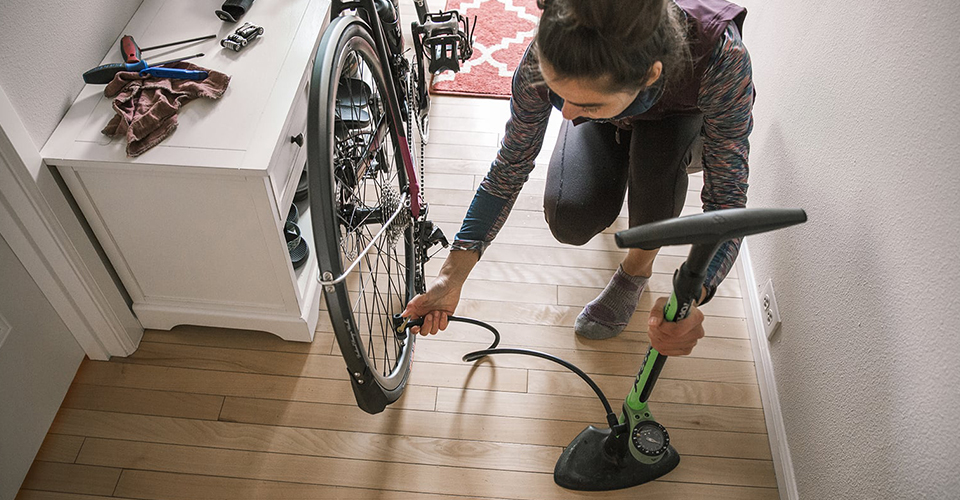 .. ", but in practice it always begins" Where to put the jack? key?”, “How to unscrew the spare wheel?” etc.
.. ", but in practice it always begins" Where to put the jack? key?”, “How to unscrew the spare wheel?” etc.
It is better to study and practice in advance than to try to do something in an emergency with difficulty and obscenities. And after you learn how to do it yourself - be sure to teach this to your household and the people you regularly carry in your car - just in case. nine0003
In addition to the relevant knowledge, you will also need tools. And, of course, the spare tire itself. Without him, you understand, it is difficult to do anything at all. So, it is worth figuring out where in your car it is stored. And is there any. Spare parts can be located in different places of the car - under the floor, under the seats, in a plastic casing at the back, in the trunk, suspended from the back with cables or mounts, etc.
The latter case is particularly difficult, as the fasteners can only be removed using the special tools supplied with the purchase.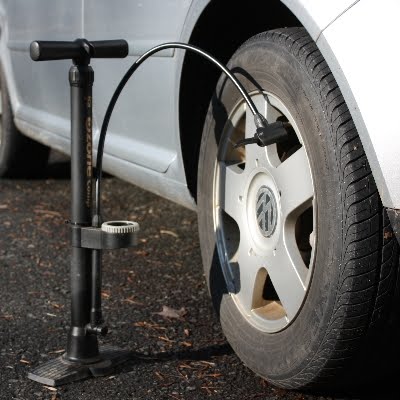 In addition, when working with them, you may need to study the instructions. And it is better to do this in a garage or a quiet environment, and not in the middle of a forest. It is also worth regularly checking the degree of inflation of the spare tire and pumping it up if the pressure is low. Keep in mind that many vehicles are shipped with flat tires or repair kits, rather than wheels that are ready to be installed. nine0003
In addition, when working with them, you may need to study the instructions. And it is better to do this in a garage or a quiet environment, and not in the middle of a forest. It is also worth regularly checking the degree of inflation of the spare tire and pumping it up if the pressure is low. Keep in mind that many vehicles are shipped with flat tires or repair kits, rather than wheels that are ready to be installed. nine0003
You will also need a jack to lift the car, a wheel wrench or other wrench that fits the nuts and bolts that hold the wheels. If all of the above is not present, then this is a sure path to disaster. Or - to a long and expensive wait for a tow truck.
The simple wheel replacement algorithm looks like this.
 This is much easier to do when the car is firmly on the ground and the wheels are not spinning in the process. But you only need to loosen the nuts, and not unscrew them completely.
This is much easier to do when the car is firmly on the ground and the wheels are not spinning in the process. But you only need to loosen the nuts, and not unscrew them completely. Read the vehicle manual before starting work. The fact is that on modern vehicles there are two main ways to fasten the wheel - using nuts or bolts. And it's better to know in advance. nine0003 A mechanical jack (left), which you will find in the trunk of almost every car, despite its not the most convenient principle of operation and small footprint, is an excellent choice for emergencies. The hydraulic jack (right) is compact and robust. Wider bases improve stability, but may be too high for vehicles with low ground clearance.
Everything seems to be clear with this, right? But what if the wheel is not replaced?
The first thing to do is fill the flat tire with compressed air. If the leakage rate is low, then this is quite enough to reach the service center. Most often, air compressors powered by a 12-volt power source are used for this. Or - compressed air cylinders of various sizes, ranging from simple CO2 cartridges, which may need several pieces per tire, to large portable cylinders. The most extreme case is a bicycle pump. It is hard, long and not rational if the air flows out faster than you replenish it. Therefore, if the damage is extensive, other methods of repair are needed. nine0003 There are many ways to inflate a tire, from compressed air and CO2 tanks, electric compressors and a good old hand pump.
If the leakage rate is low, then this is quite enough to reach the service center. Most often, air compressors powered by a 12-volt power source are used for this. Or - compressed air cylinders of various sizes, ranging from simple CO2 cartridges, which may need several pieces per tire, to large portable cylinders. The most extreme case is a bicycle pump. It is hard, long and not rational if the air flows out faster than you replenish it. Therefore, if the damage is extensive, other methods of repair are needed. nine0003 There are many ways to inflate a tire, from compressed air and CO2 tanks, electric compressors and a good old hand pump.
A variety of tools and accessories are available to help you repair your tire. U.S. Tire Manufacturers Association - U.S. Tire Manufacturers Association (USTMA), has developed its own criteria for such products. They are discussed in the text "Puncture Repair Procedures for Passenger and Light Truck Tires" - "Repair of tires for cars and light trucks. " According to these recommendations, you can work with holes not larger than ¼ inch, which are located directly in the tread area (but not on its edge or on the side surface). Under normal circumstances, this standard should be maintained, but you may find yourself in a situation where even some tire repair can make the difference between life and death! nine0003
" According to these recommendations, you can work with holes not larger than ¼ inch, which are located directly in the tread area (but not on its edge or on the side surface). Under normal circumstances, this standard should be maintained, but you may find yourself in a situation where even some tire repair can make the difference between life and death! nine0003
So, the best tool for repairing a tire is “fungus”, a kind of cork with an internal patch. They are used at service stations. This repair involves widening the hole, plugging it in, applying an activator adhesive and a patch on the inside of the tire.
The average person can install a simple harness patch without removing the tires from the rim. First, locate the location of the damage. Then - remove the debris and the damaging element (nail, screw, etc.). Then, using a spiral awl - a tool that resembles a file or rasp, clean the walls of the hole. Then - install the tourniquet (strip of rubber) on the harness installation tool, (a tool with an eye that resembles a huge sewing needle). Apply glue to the hole and the patch cord, and then push it directly into the hole, leaving no more than a centimeter sticking out. Turn the plug tool and pull it out, leaving the patch in the hole. Wait a few minutes - let the glue grab. If the damage is not particularly serious, this should be enough. This tire repair has been practiced for quite a few years. nine0003
Apply glue to the hole and the patch cord, and then push it directly into the hole, leaving no more than a centimeter sticking out. Turn the plug tool and pull it out, leaving the patch in the hole. Wait a few minutes - let the glue grab. If the damage is not particularly serious, this should be enough. This tire repair has been practiced for quite a few years. nine0003
And although this is not officially recommended, but if the puncture is not sealed, then you can try to insert additional plugs into the hole. In addition, this method should not be used with a punctured side of the tire. However, I myself have seen similar patches on the side surfaces of the wheels of ATVs, tractors and SUVs. But only in really emergency situations. And if you find yourself in such a patch, then, of course, you will have to insert such a patch, but you will need to drive slowly - at the speed of a pedestrian. And only to the place where it will be possible to change the tire normally. This applies to both off-road and the roadway - otherwise the risk is too high that the plug will be knocked out by pressure.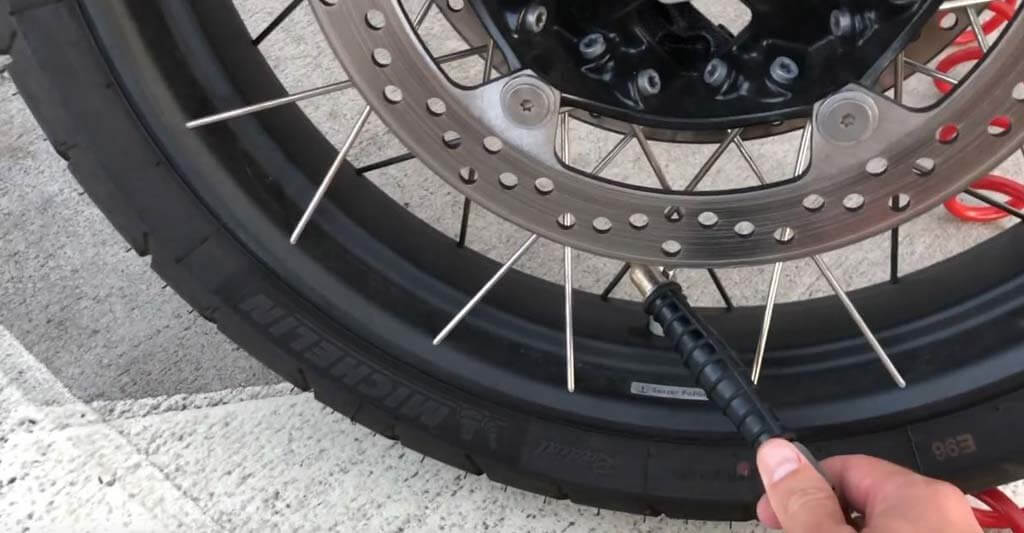 nine0003
nine0003
There are many varieties of stoppers, plugs, patches and fungi, but I would single out Stop & Go International. They work on the same principle as similar tire repair fungi, but offer a number of additional benefits:
You may ask me: “Why any plugs and fungi when you can seal the hole with Fix-a-Flat tire sealant?”. You can, of course, but this is far from the best and most successful option. Yes, sometimes it works, but it has significant drawbacks that interfere with normal use. Let's start with the fact that before the change in the formulation of Fix-a-Flat in 2016, the past mixture, according to the safety protocol of 10/15/2000, was corrosive. So older Fix-a-Flats have the potential to cause further tire damage and, in severe cases, serious wheel problems. nine0003
Let's start with the fact that before the change in the formulation of Fix-a-Flat in 2016, the past mixture, according to the safety protocol of 10/15/2000, was corrosive. So older Fix-a-Flats have the potential to cause further tire damage and, in severe cases, serious wheel problems. nine0003
Therefore, this method is a quick but temporary solution to the problem. And the chemical sealant should be removed from the inside of the tire as soon as possible. And for this, many service stations charge an additional fee. What's more, even with the new formulation, the instructions still say to remove the mixture after 3 days or 100 miles. Otherwise, problems may begin.
Slime Tire Sealant (which is injected inside the wheel and closes the puncture), and more “traditional” tire repair kits. nine0002 The old Fix-a-Flat formula contained tetrafluoroethane, heavy aromatic solvents, amorphous polyolefin, various aromatic resins, an inert filler, and a trade secret "proprietary" substance. The new formula contains tetrafluoro-1-propene, glycerin and cellulose. Just in case, check what is written on the can of sealant.
The new formula contains tetrafluoro-1-propene, glycerin and cellulose. Just in case, check what is written on the can of sealant. You may also have heard of Slime Tire Sealant, a thick green slurry that could be injected into the inside of a tire to repair minor damage and prevent further deflation. The manufacturer claims that this product is safe for TPMS (tire pressure monitoring system), contains rust inhibitors and lasts for several years. Based on my personal experience, it's true. Tires really last more than one year after such a repair. Plus, it is extremely easy to use - you need to pull the spool out of the valve (the valve through which the wheel is inflated), then - using a special tool, introduce the sealant into the tire. Slime contains glycerin, attapulgite, cellulose and quartz. nine0003 Tire repair - patch harness installation.
TireJect Sealant is similar to Slime - this liquid also needs to be injected into the chamber through a valve and is also effective for two years. But at the same time - much more liquid and is available in two versions. "Automotive Sealant" works on sidewall holes and projector punctures up to ¼" while remaining safe on tires, rims and pressure gauges. "Off-Road Sealant" works with holes up to 3/8 inch, which are also located on the side, and with tires that have already begun to rot and let air through purely due to age. It is made from liquid rubber, sealing particles and armid (Kevlar) fiber. However, it is harmful to pressure sensors. Personally, I tried it on my old land aerator tires that didn't hold pressure for more than two days. It's been 30 days since using TireJect - and they still held air! The main ingredients are propylene glycol and natural rubber latex. nine0003
But at the same time - much more liquid and is available in two versions. "Automotive Sealant" works on sidewall holes and projector punctures up to ¼" while remaining safe on tires, rims and pressure gauges. "Off-Road Sealant" works with holes up to 3/8 inch, which are also located on the side, and with tires that have already begun to rot and let air through purely due to age. It is made from liquid rubber, sealing particles and armid (Kevlar) fiber. However, it is harmful to pressure sensors. Personally, I tried it on my old land aerator tires that didn't hold pressure for more than two days. It's been 30 days since using TireJect - and they still held air! The main ingredients are propylene glycol and natural rubber latex. nine0003
While researching, I came across another tire repair sealant called FlatOut Multi Seal. I haven't used it myself, but I feel it's worth a mention. Just like the two products mentioned above, this is a liquid that needs to be injected into the inside of the wheel through a valve. According to the manufacturer, this substance lasts for 10 years, but is only suitable for off-road tires, as it harms pressure sensors. Multi Seal Pro HD 2500 handles holes up to ¾" and Multi Seal Armor 3500 up to 1 ¼". Such holes, for example, leave bullets on impact. The chemical ingredients in the FlatOut Multi Seal are 50% Propylene Glycol and the rest are branded ingredients in low doses. nine0003 You can use the external patch kit to repair a tire without removing it from the wheel. The process involves removing the punctured tire, cleaning the hole, then installing a tourniquet and applying an activator adhesive. It is wise to then go to the service, disassemble the wheel and install a fungus patch on the inside of the tire to reduce the risk of air leakage.
According to the manufacturer, this substance lasts for 10 years, but is only suitable for off-road tires, as it harms pressure sensors. Multi Seal Pro HD 2500 handles holes up to ¾" and Multi Seal Armor 3500 up to 1 ¼". Such holes, for example, leave bullets on impact. The chemical ingredients in the FlatOut Multi Seal are 50% Propylene Glycol and the rest are branded ingredients in low doses. nine0003 You can use the external patch kit to repair a tire without removing it from the wheel. The process involves removing the punctured tire, cleaning the hole, then installing a tourniquet and applying an activator adhesive. It is wise to then go to the service, disassemble the wheel and install a fungus patch on the inside of the tire to reduce the risk of air leakage.
My friend was riding a quad bike over rough terrain and blew a tire. The hole was too big for normal fixing methods, and there was no spare tire. What did he do? He sewed up the hole. That's right - he took a thick canvas needle and a thick nylon thread, put a bunch of seams on the hole, placed a patch on the tire from the inside, and then filled everything both outside and inside with activator glue. That was enough to get to the workshop. nine0003
That's right - he took a thick canvas needle and a thick nylon thread, put a bunch of seams on the hole, placed a patch on the tire from the inside, and then filled everything both outside and inside with activator glue. That was enough to get to the workshop. nine0003
In some Third World countries, damage is still being repaired with a torch and pieces of rubber that are melted directly onto the damaged areas. This, of course, requires very skillful hands, but a lot of tires have been repaired in this way. There is also the old "school trick" that allows you to put a flat tire back on the wheel - any flammable aerosol. You inject it in, ignite it, the gas expands, the tire straightens out and back onto the wheel. But we do not recommend that you use this method - it is quite dangerous, as the explosion can tear the rubber into pieces. nine0003 Damage to the side of the tire is almost beyond repair. Patching the sidewall is highly discouraged, but it can be done as a temporary measure in an emergency.
At the beginning of the article, I said that my comrades and I had to repair a tire during a rescue operation. Of course, we could install a patch or a fungus, but first we would need to find the damage, and then spend time on repairs. We could have just changed a wheel, but no one had a spare at all. nine0003
We could take the tire off and put a new tube in it. But for this it would be necessary to find a wrench, a jack, lift everything, disassemble the wheel and replace the chamber. But we didn't have a key or a jack.
High jacks are especially useful off-road for vehicles with high ground clearance. such jacks have a wide range of travel, and in addition to lifting, they can push, pull, lift and clamp. I had to do the following. Two cars went ahead - for a jack, a key, a spare wheel and tools. And we just started pumping up the punctured wheel with a compressor. 5 minutes download - 3 minutes drive. Repeat until done. In any case, this was enough to deliver the victim to the hands of the ambulance staff.